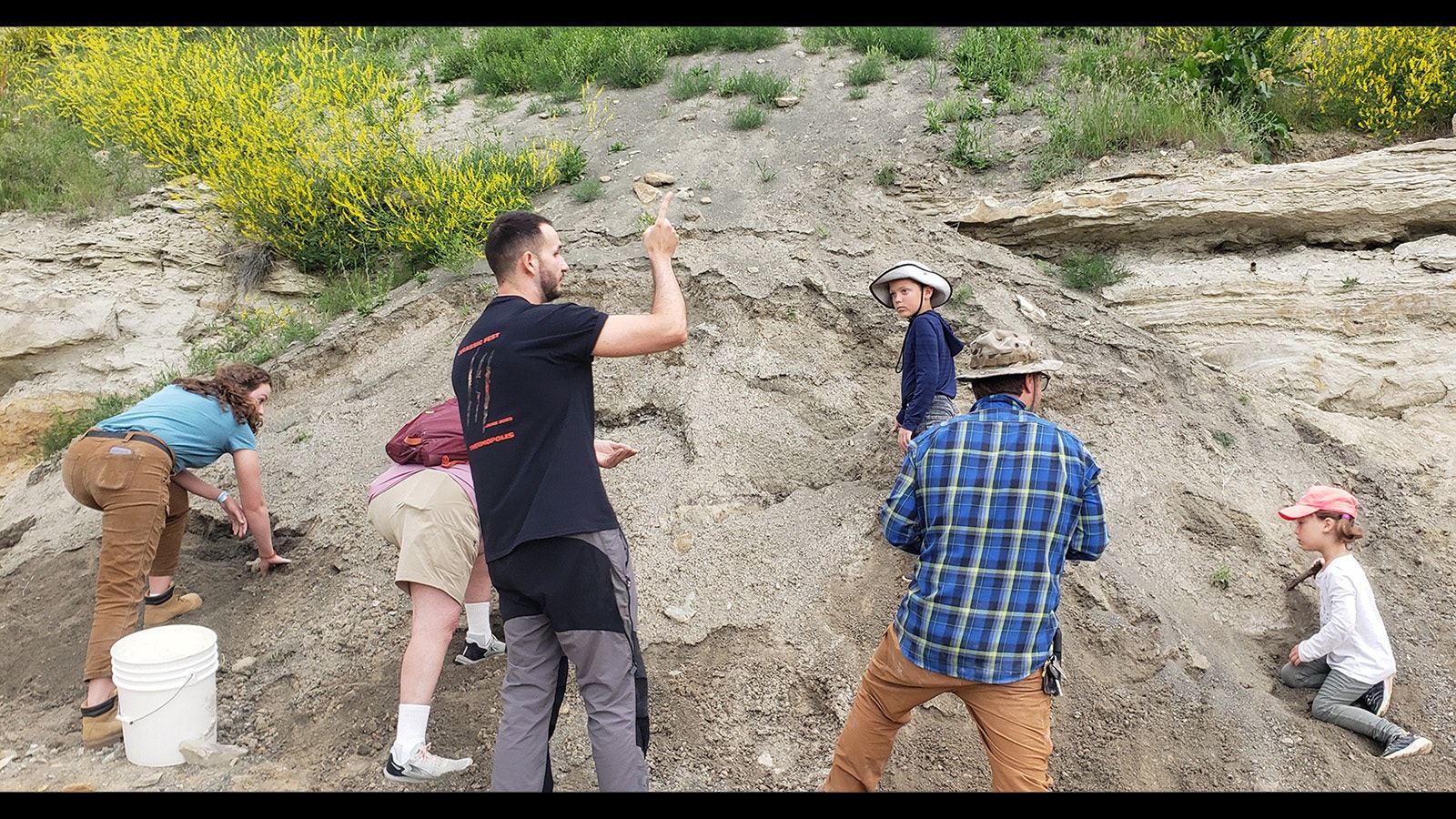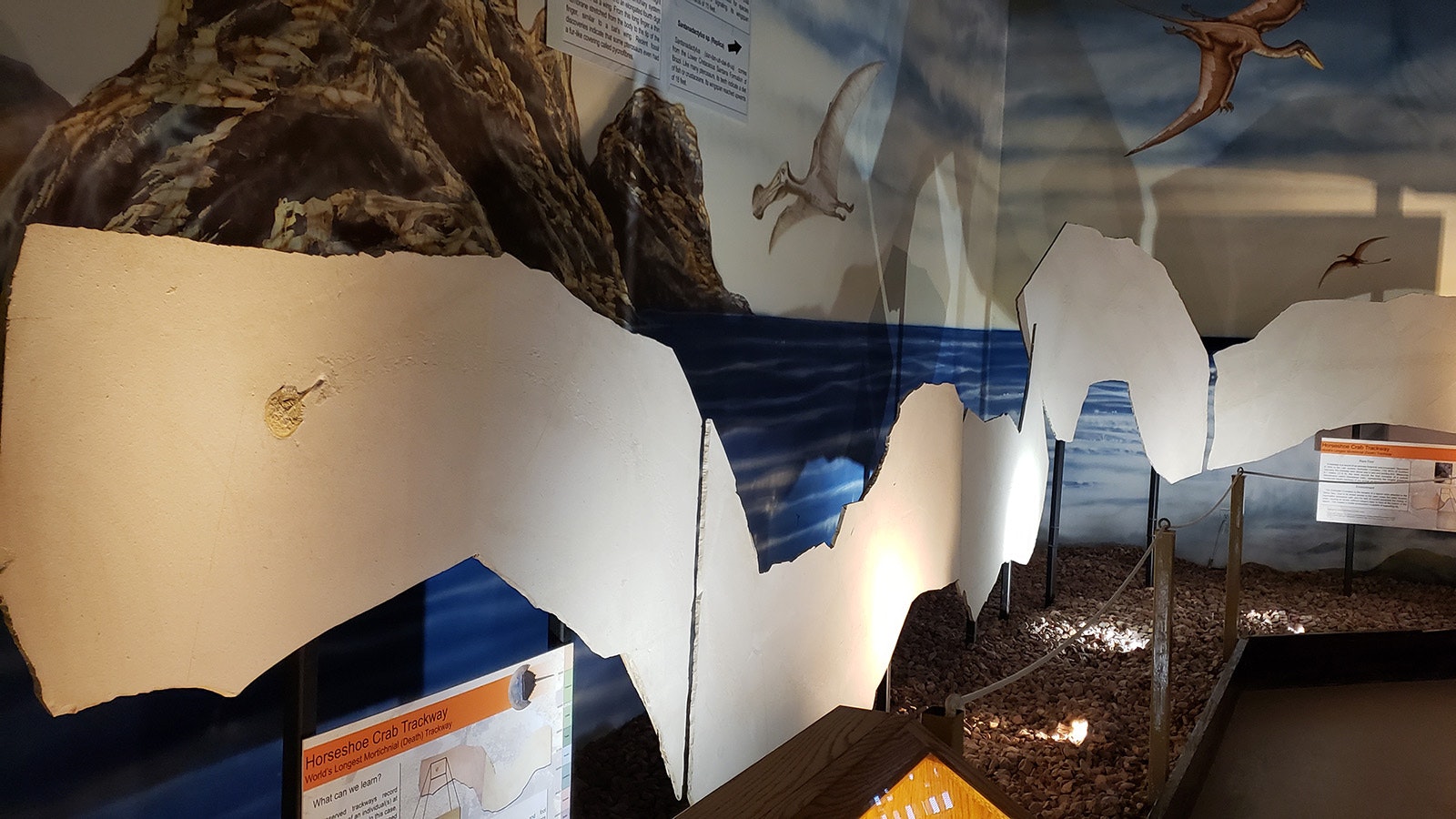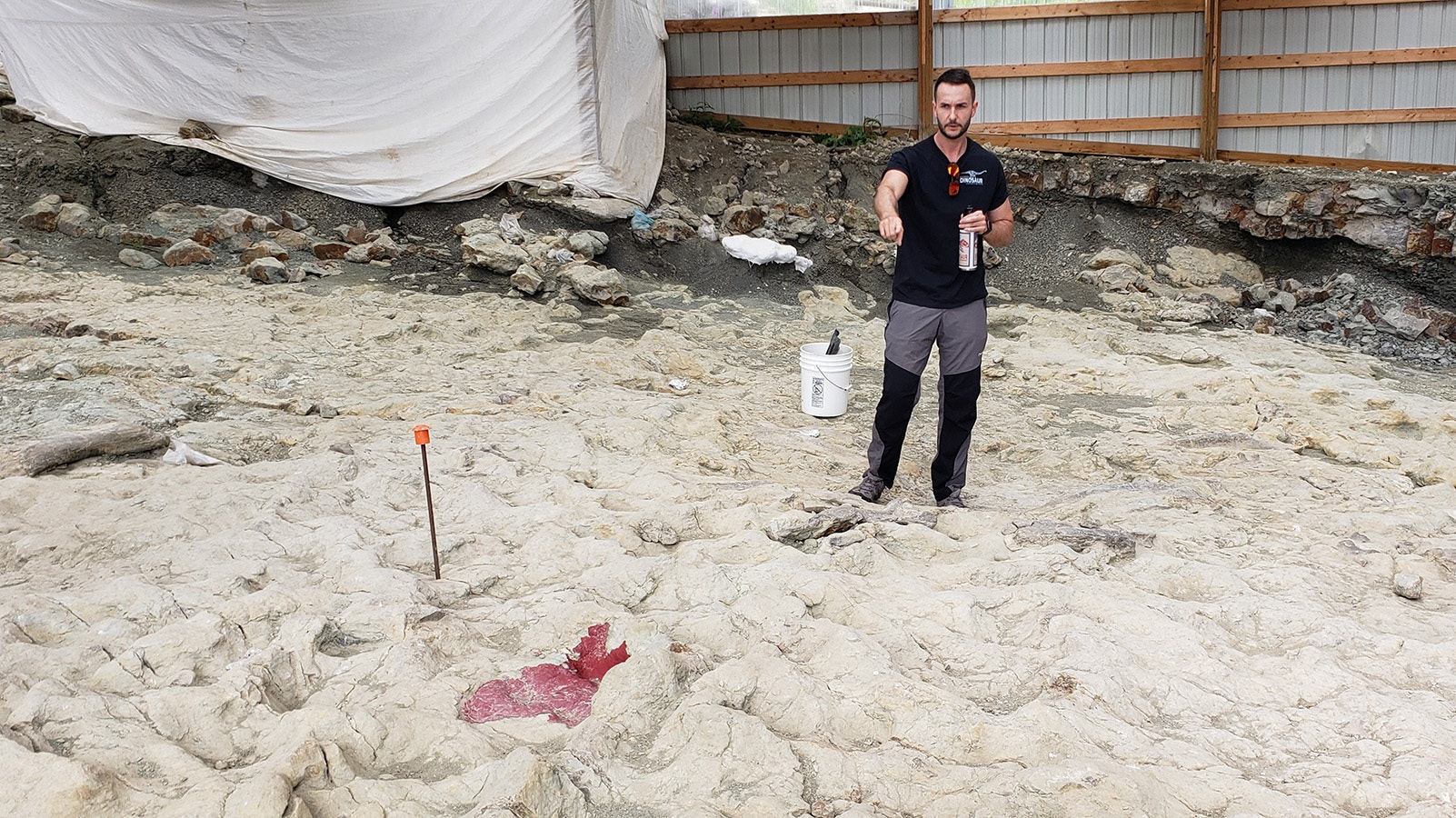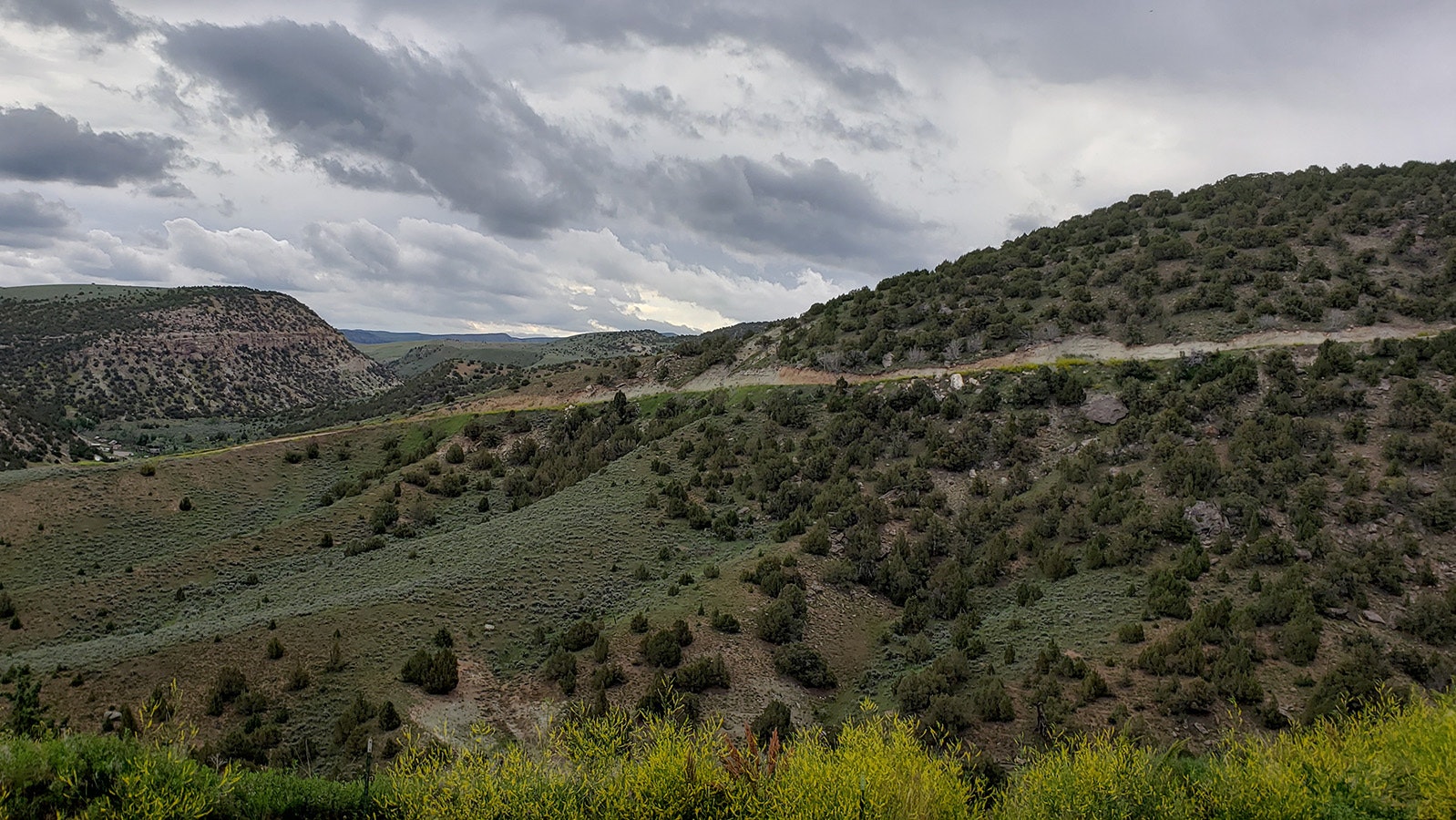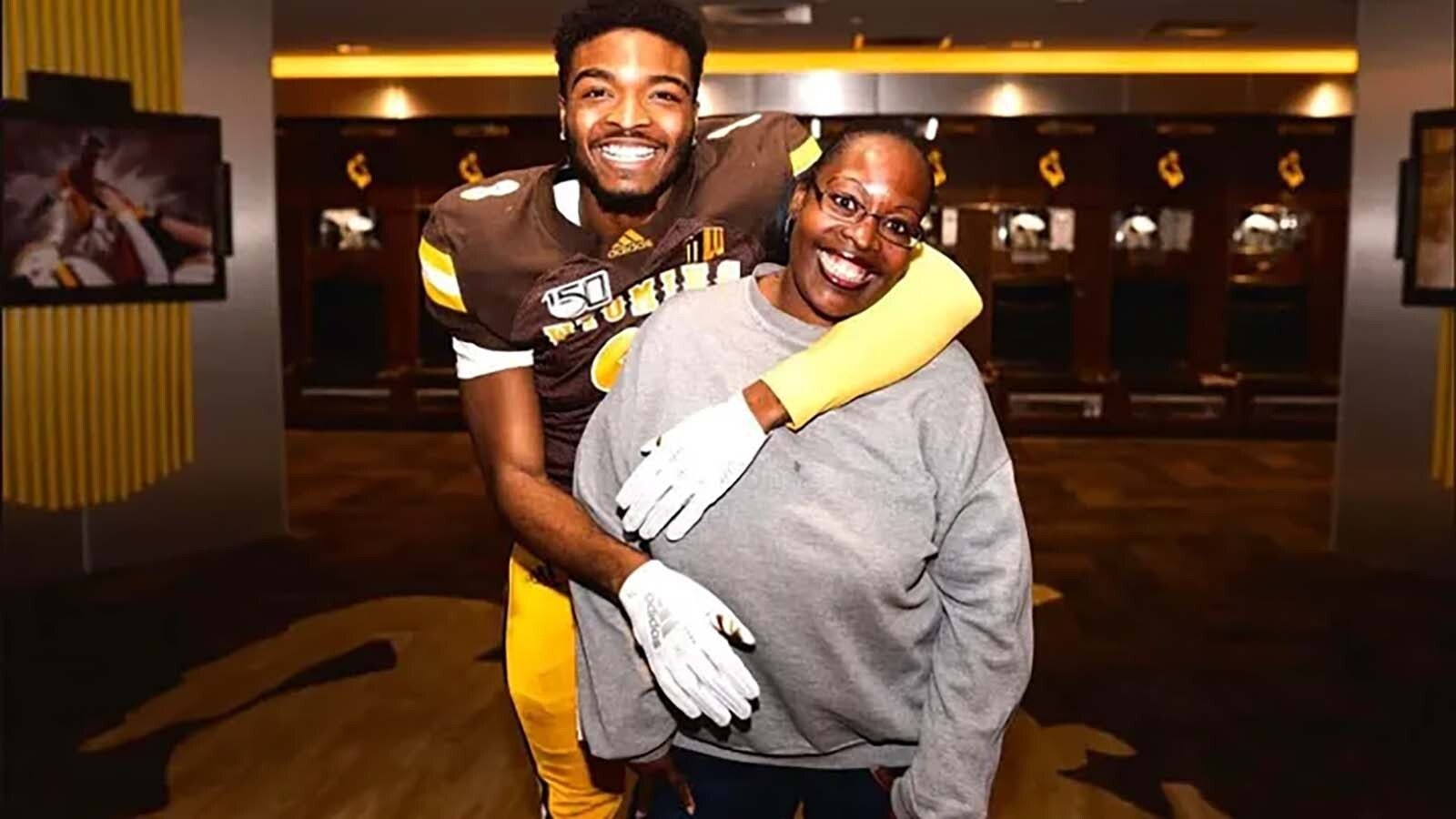THERMOPOLIS — Paleontologist Dean Lomax stood in the center of a wavy stone circle that looked a bit like choppy, frozen waves of muddy water, raised by an ancient wind.
The undulating stone, however, is not water at all. It’s fossilized mud, baked and hardened in a late Jurassic sun before finally getting filled in, layer upon layer, with a fine sediment that would further lock in an epic scene from a lost world.
The location, on the Warm Springs Ranch in Thermopolis, is called the “Something Interesting” dig site.
Friday, it served as the perfect introduction to a few of Wyoming Dinosaur Center’s dig sites for a pack of amateurs and enthusiasts who had come from all over the United States to dig alongside Lomax during the first Jurassic Fest.
Something Really Interesting
Lomax, now a world-renowned paleontologist from the United Kingdom, got his start as a paleontologist in Thermopolis, and the Something Interesting site was a big part of that.
“Picture yourself kind of back in the Jurassic, roughly 155 million years ago,” Lomax told the group. “This is the site of a lake. And it’s a really hot, baking day. You’ve got this mud that all gets hardened, because it’s so hard, and it’s been compressed.”
The baking mud was just right — soft enough to capture the impressions of footprints from heavy creatures and just hard enough to hold them for all time. Camarasaurus, allosaurus, diplodocus — all going by an ancient lakebed on a typical day in prehistoric Wyoming, thoughtlessly leaving their footprints on top of other footprints that lay on top of still more footprints.
These fossilized tracks, though, are not what makes the Something Interesting site so unique that it draws paleontologists from around the world.
It’s the concurrent presence of those footprints with contemporary bones and a set of teeth that are clearly from both adult and juvenile allosauri. It’s evidence that suggests there was likely an entire family or herd tucking into dinner together.
The Something Interesting site is just one of many exceptional archaeological digs going on at the Warm Springs Ranch.
An Epic Scene Of Life And Death In The Jurassic
Lomax writes about the Something Interesting site in more detail in his most recent book, “Locked In Time.”
Excavation at the Thermopolis site has so far revealed that the camararsaurus, which died there was roughly half the size of an adult, suggesting it was a juvenile.
The bones of the unfortunate creature lay in a large depression — the outline of its body preserved and fossilized in sun-baked mud for all time.
The heavy trampling around the body, called dinoturbation by paleontologists, includes the three-toed tracks of many allosauri. There are distinct scratch marks on the bones, and teeth of many sizes at the site, ranging from juvenile to adult.
“The scattered nature of the sauropod’s skeleton shows that the carcass was literally torn apart; even stomach stones were exposed from the sauropod’s insides,” Lomax writes in his book. “This was an Allosaurus feeding frenzy.”
The lack of allosaurus bones, meanwhile, suggests the creatures arrived on the scene, rather than actually making the kill, and that they tolerated each other’s presence. The latter suggests they could have been a social group, or a family.
The Something Interesting site is one of three scenes Lomax paints in “Locked In Time” that come from his Wyoming experiences.
There are 50 such scenes in the book in all, based on the world’s most extraordinary fossils.
A Less-Traveled Pathway To Paleontologist
Today, Lomax is a celebrated paleontologist with numerous books and television credits to his name. He’s a rock star in his field of study, and his autograph was frequently sought during Jurassic Fest in Thermopolis on Friday by fans who’d come from all over the nation, and even Canada, to dig alongside him.
But it wasn’t always so. There was a time when his dreams of being a paleontologist seemed all but lost.
“I wasn’t very gifted academically,” Lomax told Cowboy State Daily. “So, I actually ended up failing science and wasn’t allowed to do science in the final school years.”
Lacking both the requisite grades and the money to attend a university in the UK, Lomax tried a completely unorthodox approach to get where he is today.
He worked a number of jobs he hated, saving as much money as he could, then also sold his beloved “Star Wars” collection — as well as many other personal belongings — to fund a 2008 trip to the Wyoming Dinosaur Center in Thermopolis.
That funded four months of work as a volunteer in the field he had always dreamed of working in — a dream he just couldn’t give up, even if it meant working for free.
“Wyoming is one of the best places in the entire world to find dinosaur fossils,” Lomax said.
That was proven his first day at the Wyoming Dinosaur Center. During a tour, he caught sight of a long and delicate track made by a dying horseshoe crab as it tried, and ultimately failed, to escape an oxygen-depleted lagoon 150 million years ago.
It fired his imagination, Lomax told Cowboy State Daily, and when he found out it hadn’t been studied, he volunteered himself for the job.
Working with Chris Racay, one of the museum’s paleontologists at the time, that led to what would be the first of many papers Lomax would eventually write without benefit of a formal degree in the field of paleontology. These papers eventually gained him entry to a master’s program with the University of Manchester in England, where he ultimately obtained his doctorate.
“Getting into all of the experience led me down the path where I was recognized enough in the field already to be able to establish myself to do the masters and Ph.D,” he said. “And now I’m recognized as one of the world’s leading experts.”
What’s next for Lomax after this Wyoming trip will be leading an excavation in the UK of a giant creature that’s become known as the Brooklyn sea dragon, as well as a follow-up to “Locked In Time,” sketching out more dinosaur behavior from the elusive fossil record.
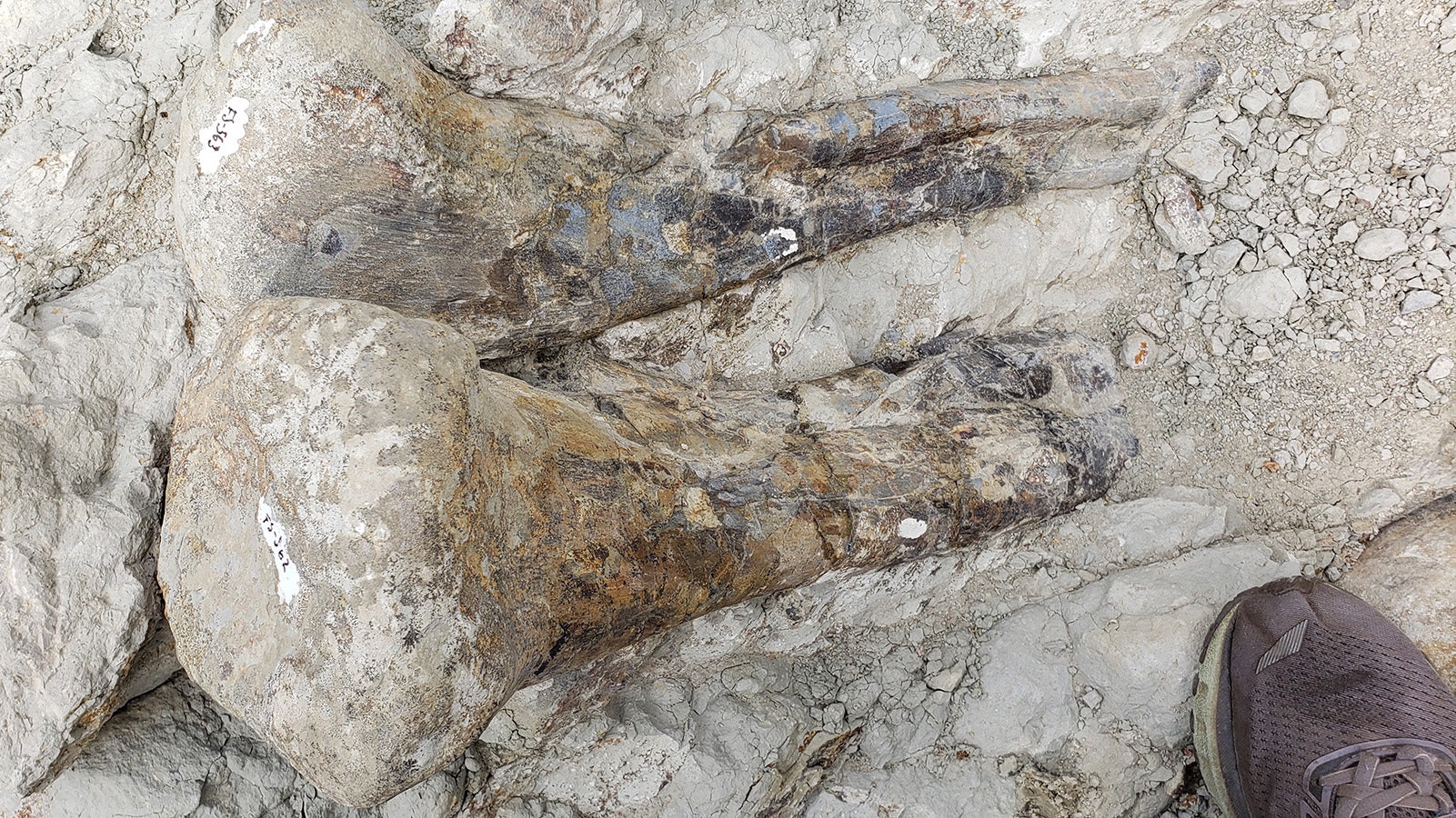
Paying It Forward
Throughout Jurassic Fest, Lomax was in constant motion, rotating between three dig sites with a dozen or so volunteers at each, talking to people about the history of each site, discussing his book, offering tips for differentiating fossilized bone from mere mineralized rock and telling funny little stories.
Like the time Wyoming Dinosaur Center Collections Manager Levi Shinkle tried that paleontologist trick of tasting a specimen to figure out if it was a bone.
Bones will suck up water because they are porous — unlike stones, which won’t.
When the specimen appeared to suck up water, Lomax said, Shinkle thought he’d for sure found a bone.
Later, however, Lomax said the specimen turned out to be deer poop.
“That’s a true story,” he said, laughing. “So be careful what you decide to taste.”
But other than the occasional joke or photo, slowing Lomax down for more than few seconds seemed impossible Friday. Until, that is, he heard there was a 6-year-old girl named Sierra on site who wanted to be a paleontologist.
He knelt beside her immediately to talk about dinosaurs with her, and to show her a few tricks of the trade.
Using a small oyster knife, Lomax demonstrated how he lifts and flakes away layers of dirt that don’t matter, to work around a bulging section that, to his trained eye, hinted at possible bone.
“Keep working around that,” he advised. “Not too close.”
The honeycombed bones are blackish in appearance, but not at all the solid rock they at first appear. They’ll powder easily if a knife slips too close.
Sierra renewed her efforts, with more confidence than before.
Seeing that, Lomax couldn’t help but smile.
It recalled his own fascination with dinosaurs at so very young an age, walking into a museum full of giant dinosaurs and being awed, or turning up a fossil on a beach in England and realizing he is the first to have held it in millions of years.
“That’s quite a magical experience,” Lomax said. “And one that has always remained with me, right through from being that starry-eyed child, you know, loving fossils and things. It remains with me, and I think that’s where my fascination really comes from.”
Renée Jean can be reached at renee@cowboystatedaily.com.

